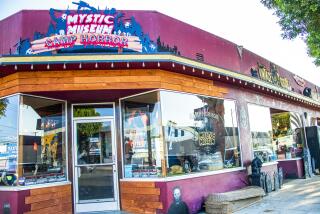And you think you knew the ‘Mona Lisa’
This much is well established: On Aug. 21, 1911, an Italian house painter named Vincenzo Peruggia, who had briefly worked on a project at the Louvre, walked out of the Paris museum with the celebrated masterpiece by Leonardo da Vinci. He kept police and newspapers speculating about the crime for more than two years before sending a letter to a Florence art dealer signed “Leonard V.” offering him the painting. Peruggia was soon caught and successfully tried. But in 100 years of fascination with the theft that has produced books, articles and even a documentary, a number of odd or puzzling facts have emerged — some more compelling than the question of who did it.
1. Because of their connection to Géry Pieret, a Belgian thief who had stolen two Iberian sculptures from the Louvre that Picasso bought, both Picasso and a friend, the poet Guillaume Apollinaire, were questioned by police about the crime. Apollinaire was brought in first and was detained for about a week. Picasso, brought in later, apparently denied knowing Apollinaire and was released.
2. It took 28 hours for museum officials to realize that the painting had been stolen, not just temporarily removed for photography or study. Once they did, the museum was closed for investigation and didn’t reopen for a week.
3. While the “Mona Lisa” was celebrated as a painting before its theft, it was not yet a household image, so the French police printed its reproduction on 6,500 fliers to blanket the city with “missing pet” type signage.
4. After the painting’s theft, the Louvre left its spot on the wall blank, and crowds flocked to pay respects. A year later, a portrait of Baldassare Castiglione by Raphael took its place.
5. A French clairvoyant, Madame Albane de Siva, told the Paris-Journal newspaper that, according to the planets, the thief was a “young man with thick hair” and that the famous painting had not left the grounds of the museum.
6. Given the rise of such American mega-collectors as J.P. Morgan, Henry Clay Frick and H.E. Huntington (whom Bernard Berenson once dubbed “squillionaires”), many suspected that a wealthy American had had the painting stolen for his own private pleasure. According to “The Crimes of Paris” by Dorothy and Thomas Hoobler, Morgan was mobbed at a Florence train station by Italians who believed he had the painting. In the U.S., where the Secret Service was rumored to be on the case, Huntington told the L.A. Times, “I have not seen the picture and have not been tempted.”
7. The French police had one good fingerprint on the glass that had protected the painting and a good database of criminal prints to search for a match. But it wasn’t good enough, even though Peruggia had been briefly imprisoned before the theft. As it turns out, police had Peruggia’s left thumbprint; their database was organized by right-hand prints.
8. Peruggia built a white wood trunk with a false bottom to house the “Mona Lisa.” At one point, in the main compartment was a mess of tools, clothes and a mandolin.
9. In court, Peruggia admitted meeting in London with Henry Duveen, patriarch of a legendary antique dealing family. But he denied trying to sell Duveen the painting, claiming rather that he had stolen it for patriotic reasons and was soliciting Duveen’s advice about returning it to Italy.
10. According to a 1932 article in the Saturday Evening Post by Karl Decker, the real mastermind behind Peruggia’s theft was a mysterious Argentine con artist named Eduardo de Valfierno, who staged the theft in order to sell not one but six American millionaires convincing forgeries of the painting. Those alleged forgeries have never surfaced, and in his upcoming documentary “The Missing Piece,” Joe Medeiros ably puts the Valfierno myth to rest, ultimately declaring: “I think Karl Decker simply made him up.”
More to Read
The biggest entertainment stories
Get our big stories about Hollywood, film, television, music, arts, culture and more right in your inbox as soon as they publish.
You may occasionally receive promotional content from the Los Angeles Times.










